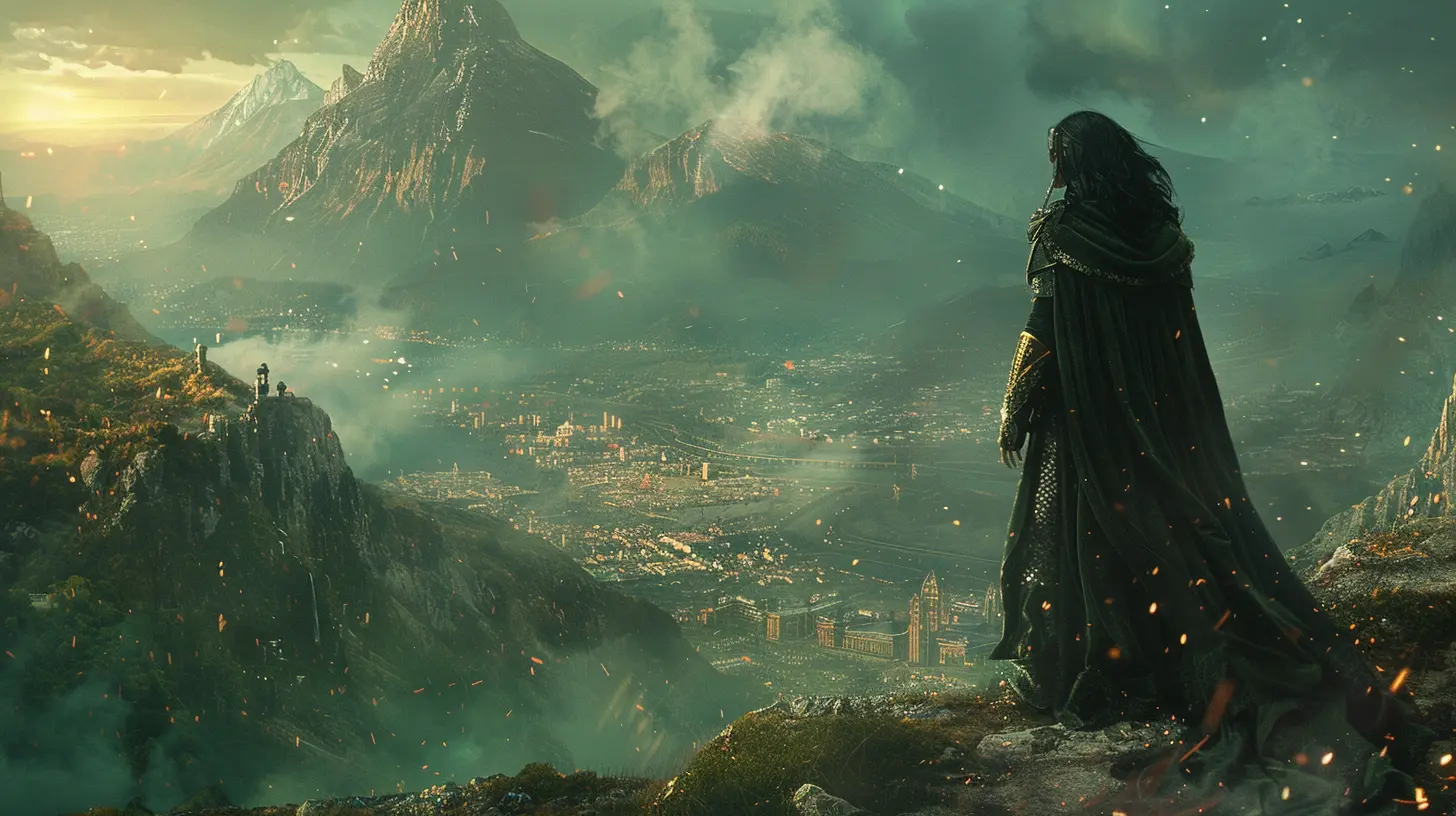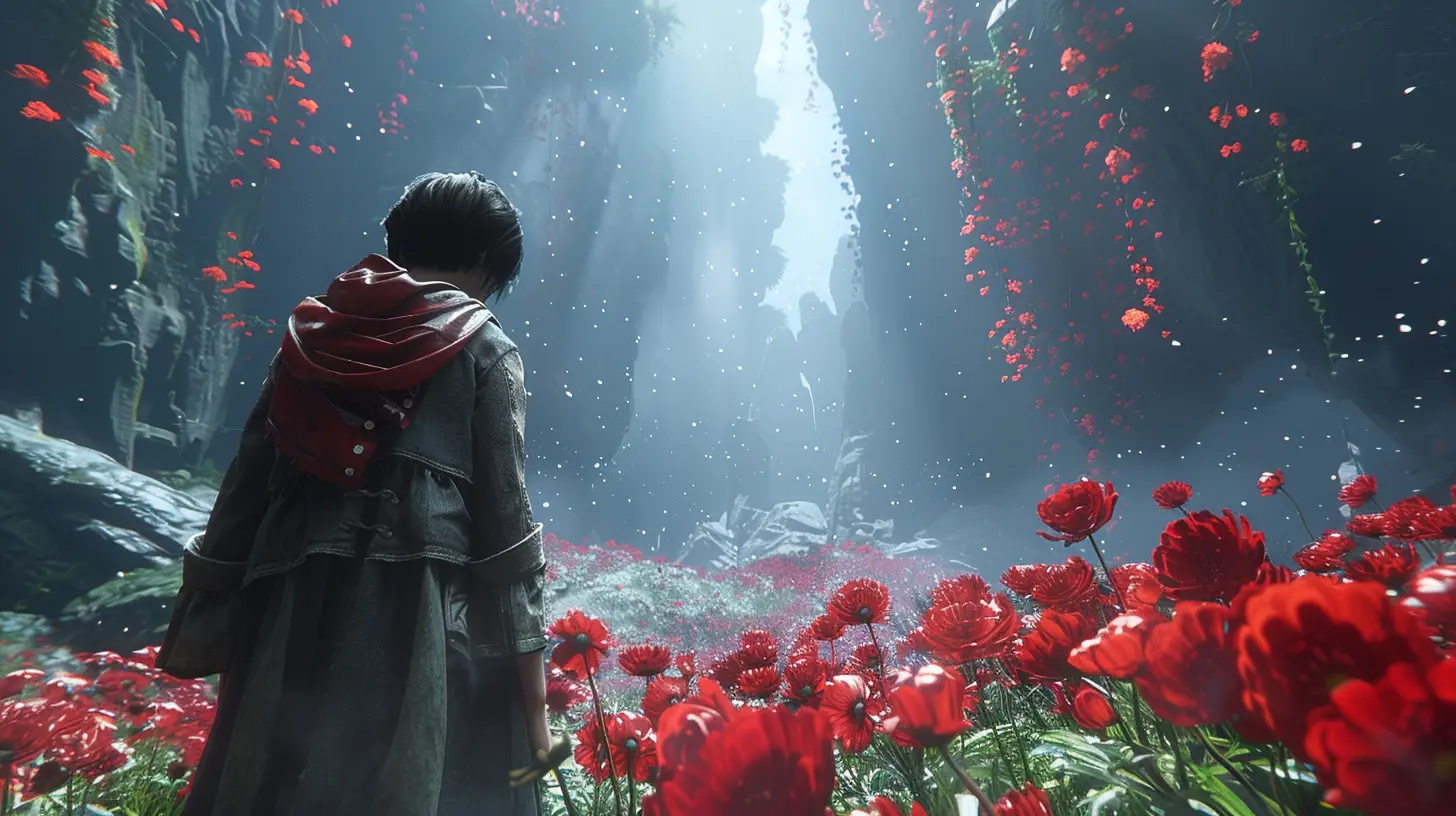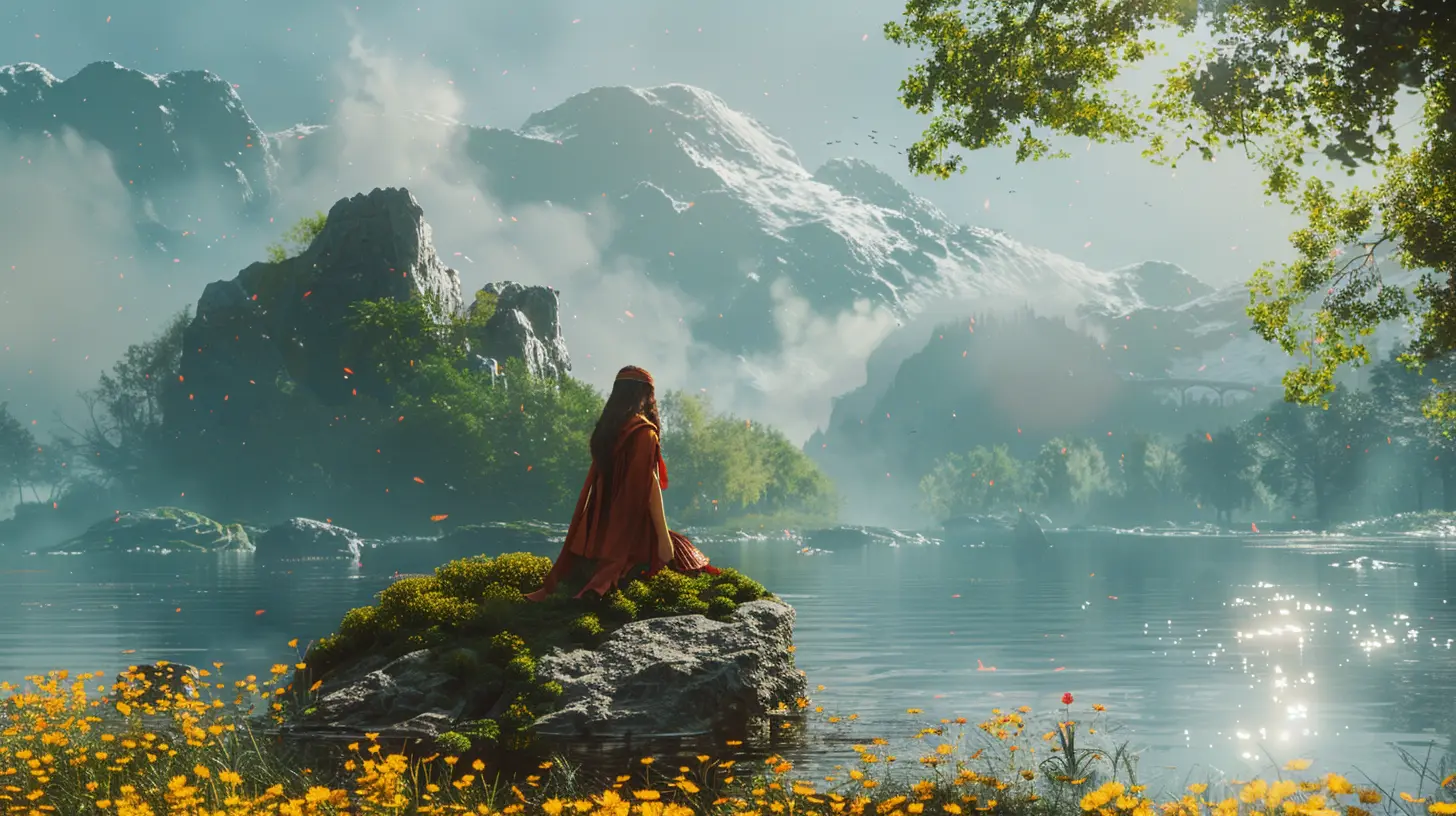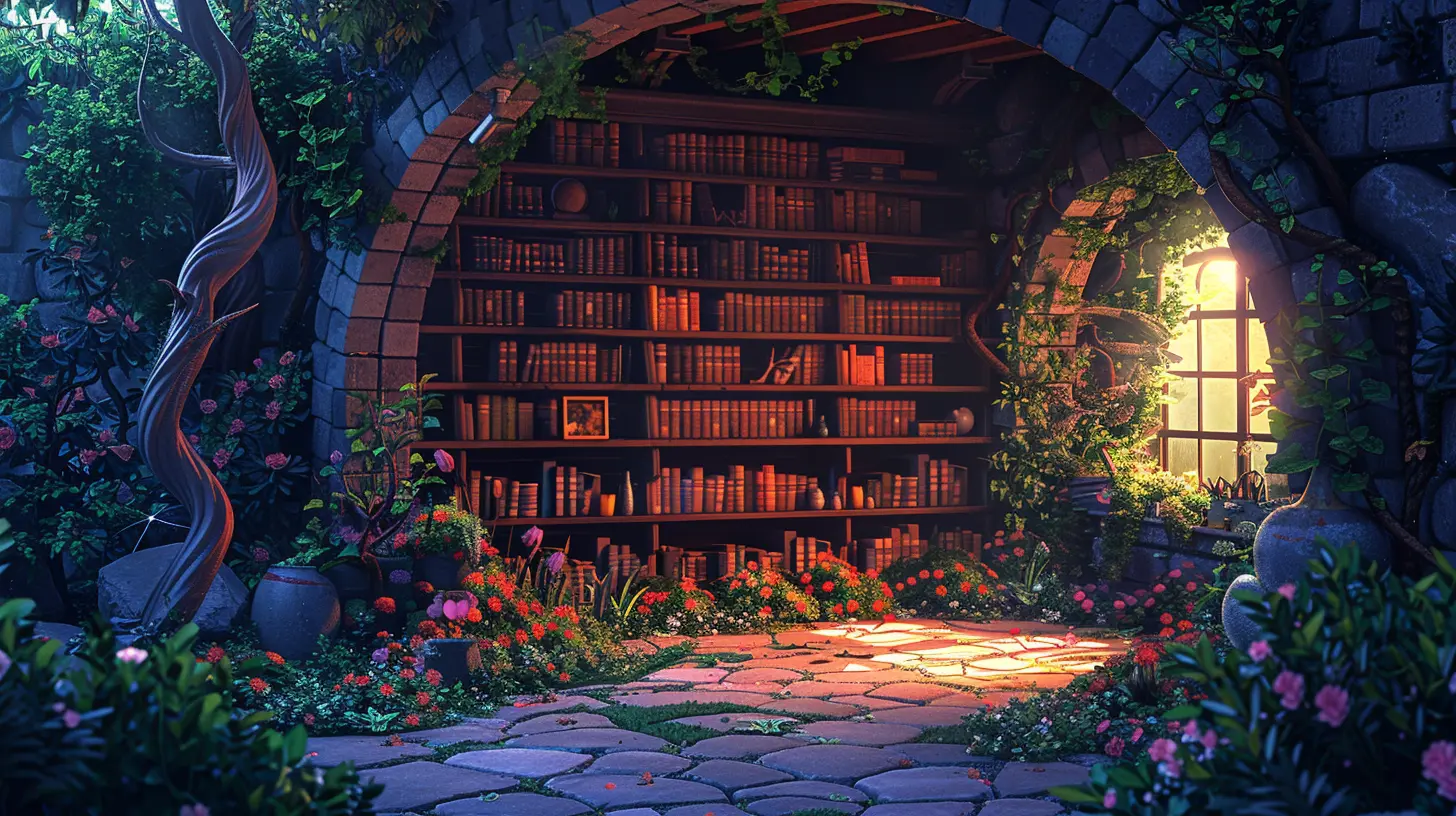The Rise of Nonlinear Storytelling in Game Development
30 April 2025
Hey there, fellow gamer! Have you ever found yourself deeply immersed in a game, unraveling a story that felt less like a straight line and more like a web of choices, twists, and surprises? Yeah, me too. That’s nonlinear storytelling for you, and it’s taking the gaming world by storm. In this article, we’re diving into the fascinating world of nonlinear narratives, why they’re so popular, and how they’ve evolved into one of the most exciting aspects of game development today.
So, buckle up, grab your favorite snack, and let’s get into it! 
What Is Nonlinear Storytelling?
First things first—what exactly is nonlinear storytelling? Simply put, it’s the art of telling a story that doesn’t follow a straight, chronological path. Think of it like a "choose your own adventure" book but on steroids. Instead of spoon-feeding players a single pre-determined plot, nonlinear games let us shape the journey ourselves. The result? A gaming experience that feels personal, unique, and unforgettable.If linear storytelling is a highway, think of nonlinear storytelling as a sprawling web of paths. You decide where to go, who to trust, and what consequences you'll face. Pretty cool, right? 
Why Gamers Love Nonlinear Narratives
Let’s be honest, nobody likes being told what to do all the time—especially while gaming. Nonlinear storytelling gives us, the players, that thrilling sense of control. You’re not just playing; you’re crafting YOUR story.Here’s why nonlinear narratives have a special place in our gaming hearts:
1. Player Choice and Freedom
How many times have you wished you could change a game’s ending when things didn’t go your way? Games like The Witcher 3: Wild Hunt let you do just that. Your decisions—big or small—affect the plot, characters, and even the world around you. It’s like being the director of your own interactive movie.2. Endless Replayability
With nonlinear storytelling, no two playthroughs are the same. One moment you’re saving a village, and the next, that same village could be burning because you made one “tiny” decision differently. Games like Detroit: Become Human have dozens of endings, making you want to play again and again just to see how things could change.3. Emotional Investment
Since your choices directly shape the story, you feel invested. Like really invested. When a character suffers because of a decision you made, it hits hard. It’s no longer just a story you’re watching unfold—it’s a story you’re responsible for.
A Brief History of Nonlinear Storytelling in Games
Believe it or not, nonlinear storytelling isn’t exactly a new concept in gaming. It’s been around for decades, evolving alongside technology and player expectations.The Early Days:
Back in the 1980s and 90s, text-based adventure games like Zork and King’s Quest were the pioneers of choice-driven storytelling. While the graphics were... let’s just say “minimal,” these games laid the groundwork for branching narratives.The RPG Influence:
Fast forward to the golden age of RPGs (role-playing games) like Baldur’s Gate and Final Fantasy. These games began incorporating decision-making mechanics, moral dilemmas, and side quests, deepening their storytelling potential.Modern Masterpieces:
Today, games like The Witcher 3, Mass Effect, and Red Dead Redemption 2 have taken nonlinear storytelling to jaw-dropping levels. With lifelike characters and complex plots, these games blur the line between virtual and reality.
Challenges Developers Face with Nonlinear Storytelling
Okay, creating a nonlinear narrative sounds awesome, but let’s not forget—it’s hard. Like, really hard. Game developers are essentially writing multiple stories all at once, each with its own twists, turns, and outcomes.1. Writing Complexity
Imagine trying to write a novel where every decision changes how the story ends. Now, multiply that complexity by 100. That’s what developers tackle when crafting nonlinear narratives. Every choice needs to make sense, every outcome has to feel satisfying, and every path needs to be worth exploring.2. Balancing Freedom and Structure
Too much freedom can overwhelm players, while too much structure feels rigid. Striking the perfect balance? Easier said than done. Developers often walk a fine line between giving players control and ensuring the story doesn’t spiral into chaos.3. Technical Challenges
Coding a game with multiple branching paths isn’t just time-consuming—it’s expensive. And let’s not forget about those pesky bugs that can ruin a carefully crafted moment.4. Player Expectations
Gamers are picky—myself included! We expect choices to matter, characters to feel real, and stories to adapt to our every whim. Meeting these expectations is no small feat.Iconic Games That Nailed Nonlinear Storytelling
So, who’s doing it right? Let’s shout out some games that absolutely mastered nonlinear storytelling.1. The Witcher 3: Wild Hunt
This game is the textbook definition of a nonlinear masterpiece. From deciding the fate of entire kingdoms to influencing Geralt’s love life, everything feels like it carries weight. Oh, and the 36 possible endings? Mind-blowing.2. Mass Effect Series
BioWare’s space epic is legendary for its branching storylines and heart-wrenching moral dilemmas. Your choices in Mass Effect even carry over into its sequels, making you feel like the ultimate galactic decision-maker.3. Skyrim
If freedom had a poster child, it’d be Skyrim. Want to join the Thieves Guild? Become an assassin? Ignore the main storyline and just hunt dragons? The choice is all yours.4. Life is Strange
This emotional rollercoaster of a game is ALL about choices. Whether you’re rewinding time to save a friend or deciding who to trust, every choice feels deeply personal.The Future of Nonlinear Storytelling
So, where’s nonlinear storytelling headed? Well, if current trends are any indication, it’s only going to get better. As technology evolves (hello, AI and procedural storytelling), developers will have even more tools to craft highly personalized narratives.Imagine a game that responds to your emotions in real-time or adapts its story to your personality. Sounds like sci-fi, right? But we might not be too far off.
One thing’s for sure: storytelling in games is becoming more immersive, more interactive, and more player-driven than ever before. And honestly? I can’t wait to see what’s next.
Conclusion
Nonlinear storytelling has completely revolutionized gaming, turning us from passive observers into active participants. Whether it’s making us rethink a moral choice or surprising us with an unpredictable plot twist, these narratives ensure no two gaming experiences are alike.Sure, creating them is a monumental task for developers, but their impact on players is undeniable. The rise of nonlinear storytelling isn’t just a trend—it’s a bona fide game-changer (pun totally intended). So, the next time you pick up a controller, take a moment to appreciate the intricate storytelling web you’re about to dive into.
Who knows? Your choices might just change the game.
all images in this post were generated using AI tools
Category:
Video Game DesignAuthor:

Francesca West
Discussion
rate this article
6 comments
Valencia Diaz
Nonlinear storytelling enhances player engagement by offering diverse experiences and choices, allowing for deeper emotional connections and a personalized narrative journey in games.
May 17, 2025 at 4:19 AM

Francesca West
Thank you for your insightful comment! I completely agree that nonlinear storytelling significantly enriches player engagement by fostering emotional connections and personalized experiences.
Barrett Becker
Nonlinear storytelling enriches gameplay, offering deeper player experiences.
May 13, 2025 at 3:07 PM

Francesca West
Thank you! I completely agree—nonlinear storytelling truly enhances player engagement by allowing for personal and unique experiences within the game.
Tempra Mason
Embrace the chaos, gamers love choices!
May 7, 2025 at 3:13 AM

Francesca West
Absolutely! Embracing chaos allows for diverse narratives, giving gamers the freedom to shape their own experiences.
Marissa Snow
Nonlinear storytelling enriches gaming experiences, empowering players to shape their journeys and explore limitless creativity—exciting times ahead!
May 6, 2025 at 4:40 AM

Francesca West
Thank you for your insightful comment! I'm thrilled to see how nonlinear storytelling is transforming player experiences and creativity in gaming. Exciting times indeed!
Linnea Stevens
Nonlinear storytelling enriches player agency, fostering deeper emotional connections and enhancing overall gaming experiences.
May 3, 2025 at 2:54 AM

Francesca West
Thank you for your insightful comment! I completely agree—nonlinear storytelling indeed empowers players and creates more immersive emotional experiences in gaming.
Megan Flores
Nonlinear storytelling: because who wouldn’t want to save the world after accidentally joining a cat video club? Let’s embrace the chaos—plot twists are the new power-ups!
April 30, 2025 at 2:29 PM

Francesca West
Absolutely! Nonlinear storytelling adds a layer of unpredictability that enhances player engagement, making even the most whimsical scenarios—like saving the world through a cat video club—feel exciting and fresh. Embracing chaos can lead to unforgettable experiences!




